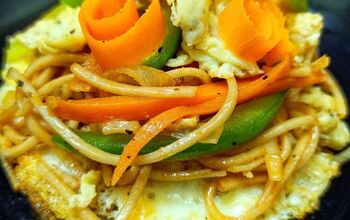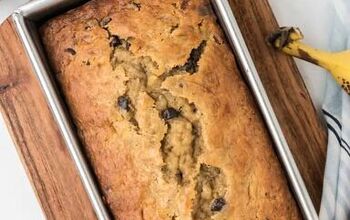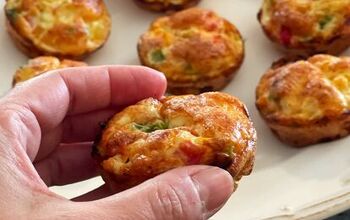Crispy Roast Duck With Fig and Sage Glaze

Crispy roast duck is truly one of the greatest delights in the culinary world. The duck is wildly flavorful from the high fat content, and bonus, it makes the skin so crisp you are never going to want to eat another type of poultry again (sorry not sorry turkey).
Duck, in particular, whole roasted duck, gets a bad wrap. People love to complain about it being fatty, not cooking properly, etc. etc. That stops today. Here's why.
Duck is so freaking good. Does it have more fat than chicken? Yes. Does that make it taste better than chicken? Hell yes. And don't even get me started on turkey (turkey is the worst. I will die on this hill.) Here's the thing though. All that fat is going to render out in the cooking process, ending up as delicious gold liquid on the bottom of your pan. YOU WILL NOT THROW THIS AWAY. I will show up at your house if you try. I will be at your front door to admonish you. Or at the very least steal it from you and take it home myself. More on what to do with that yummy yummy meat juice later.
Crispy roast duck also comes dressed to impress. She's your friend who shows up at a casual dinner party dressed in an designer evening gown and Louboutin's. But she looks amazing instead of ridiculous and everyone hates/loves her for it. It's skin becomes a deep golden, crispy brown, and laid all out on a serving platter? Please. It's game over for any other poultry who dares to show up.
Finally, whole roasted duck is easy to cook. I know it can seem intimidating, because honestly, it's not that common of a dish. But that's what I'm here for. So don't worry, keep reading, and get ready to blow everyone away with your cooking prowess.
Types of Duck
First of all, let's start by going over the different types of duck. They're all great, frankly, but you can pick the one that you think sounds the best:
- Pekin: this duck is meaty but with a mild flavour. It's also pretty accessible and easy to find in most supermarkets. It's commonly used for dishes like Duck a L 'orange. Note: This one also goes by the name of Long Island Duckling).
- Muscovy: this guy probably has the most intense flavour, meaning that he's great for roasting or braising. It also has more fat than the pekin, but again, we're not worried about the fat. We want the fat. Fat=flavour.
- Moulard: this one is actually usually use for foie gras. Because of it's rich diet, the meat of the breasts reflects that fatty flavour. Usually recommended for just eating the breasts (sometimes labeled as margret).
To be honest, you can go with whatever you want for roasting, because they're all going to taste great. If it's your first time, I would probably go with pekin, just because it's going to be easy to work with and easy to get your hands on (P.S. Brome Lake Duck is pekin, if you're wondering. It's super popular in Canada for high quality).
How Make Perfect Crispy Roast Duck
Here's a video where I break it down, start to finish. Note - you don't have to add the glaze to this recipe, roasted duck tastes just as incredible with salt. You don't even need oil, because it's got the high fat content already. If you're not in the mood for a video, I'll go over all the steps below.
First, you're going to need to find your duck. Try and grab one that's around five or six pounds. Bring it home, let it defrost in the refrigerator for a couple of days if it's frozen.
Take it out of the fridge, and pat it down with a paper towel. Next, score the skin on the breast and back on a diagonal, making long lines across the bird. Don't cut too deep though, you don't want to touch the actual meat, just the fat, so it has somewhere to go. Your life will be significantly better if you have a sharp knife while your doing this. At the end, you should have a diamond looking pattern across the duck.
You're going to want to season this very liberally with salt, and rub it in all the nooks and crannies. Salt is what's going to carry this flavour all the way to the end.
Next, remove the giblets from the bird so we can stuff it. You can put whatever aromatics you want in there, for this recipe, I'm going with oranges, thyme, sage and cinnamon. So very classic holiday.
At this point, the bird is pretty much ready to go. You can truss the legs if you want, but I don't find this super necessary. Get out a roasting pan that has a rack in the bottom. This is really, really important. If you want crispy skin (and of course you do), you have to make sure that air can circulate around the bird while it's roasting. You don't want it cooking in it's own juices (although duck confit, so good). Start by placing the duck in the pan breast side down, and put it in a 400 F oven for 50 minutes. Come back, flip it over, and come back and check on it in another 50. At this point, she should be looking pretty golden and delicious, so we're going to add our glaze. You don't want to add it any earlier because the sugar in it will start to burn. Leave it for another 15 minutes, come back and check the internal temperature. You're looking for somewhere between 165 and 175 F.
Let the bird rest for 15 minutes (make duck fat roasted potatoes if you want), and then come back to plate and carve it.
How to Carve Duck
This is actually more of the easy part - it's basically just like chicken or turkey. For the wings and the legs, just gently pull them away from the body, and find the joint where it attaches. Cut through it. You can essentially repeat this process with the legs. For the breasts, slice down the middle of the bird, going deep enough that you find the bone. Next, angle your knife so it follows the line of the rib cage and carefully slice off the breasts. Then thinly slice the breasts itself.
Ok, but What About this Fat?
You are going to be left duck fat at the bottom of your pan, or as I like to call it, nectar of the gods. You can do whatever you want with it really. Make a gravy, make a jus, but whatever you do, don't throw it out. You can use it to replace whatever fat you would normally use for cooking (it's particularly good with roasted duck fat potatoes).
Where to find Duck
Duck used to be something that was difficult to track down, but it's becoming more and more common. You can find it in most major grocery stores, but it not, check with your local butcher to see if they have any, or if they know where you can get some.
What to Serve
Wine Pairings
This can be a bit of a tricky one, because duck is a red meat, but the meat itself is quite tender and can be on the milder side, depending on how you cook it. Pinot Noir is the go-to classic, and it would still totally work with this dish, but roasting a duck means it can stand up to something a bit more full-bodied. Here's a couple suggestions:
- Tempranillo
- Chianti
- Brunello (if you're feeling fancy)
Sides
This is definitely an entrée that's on the heavy side, so you want recipes that are going to stand up to it. Here's a few of my favourite suggestions:
The Ultimate Make-Ahead Mashed Potatoes
Cardamom Maple Carrots with Orange Cream
Smoked Gouda Mac and Cheese
Roasted Brussel's Sprouts with Crispy Prosciutto
The Best Homemade Caesar Salad
FAQ's
How to I make Duck Crispy?Make sure the skin is really dry before you cook it. Leave it in the fridge overnight without covering, and pat down with paper towels before cooking. A high temperature oven is also key.
What's the internal cooking temperature of duck? 165°F
Does duck taste good? It's so good! It has a stronger flavour than chicken but it's very savory and really delicious. The dark meat and fat makes it so much better than turkey.
How long do I need to cook duck for?Depending on the size, between 2 and 3 hours.
Crispy Roast Duck With Fig and Sage Glaze
Recipe details
Ingredients
- 1 5-6 lb whole duck
- 2 tablespoon salt
- 1 orange, cut in half
- 2 bunches sage divided
- 1 C water
- 1 C sugar
- 6-8 fresh figs, cut in half
Instructions
- Preheat your oven to 400°F.
- Pat the duck down everywhere with paper towel.
- Using a sharp knife, score the skin on the front and back in long, diagonal strokes, making a cross-hatch (diamond) pattern. Cut deep enough to go through the skin and fat, but not deep enough to cut the meat.
- Rub the salt into the duck.
- Cut the orange in half, and stuff the fruit and once bunch of sage into the duck cavity.
- Place breast side down in a large roasting pan on top of a wire rack. Roast for 50 minutes, flip over, and roast for another 50 minutes.
- Meanwhile, make the glaze. Bring water to a boil in a small saucepan over high heat. Turn down to a simmer, add the sugar, and stir until dissolved. Add the fresh figs, and simmer for 5 more minutes. Turn off the heat, and add the second bunch of sage. Steep for at least 20 minutes, or up to 4 hours.
- Take the duck out of the oven, and brush the glaze over the top. Return to the oven for another 20 minutes, or until the internal temperature reaches 165°F.
- Remove the duck from the pan and let it rest for 15 minutes. Reserve duck fat for immediate use, or freeze for another time. Serve immediately.
Tips
- If you can, leave the duck uncovered in the fridge overnight. This will help the skin dry out, and make it even crispier.
























Comments
Share your thoughts, or ask a question!
In the text above the recipe, oven temp is stated at 450. In the recipe box it says 400. Which is correct? Reading the first one I thought 450 is pretty hot for almost two hours.
You touched your hair and then touched the duck!!!! Uggg!!